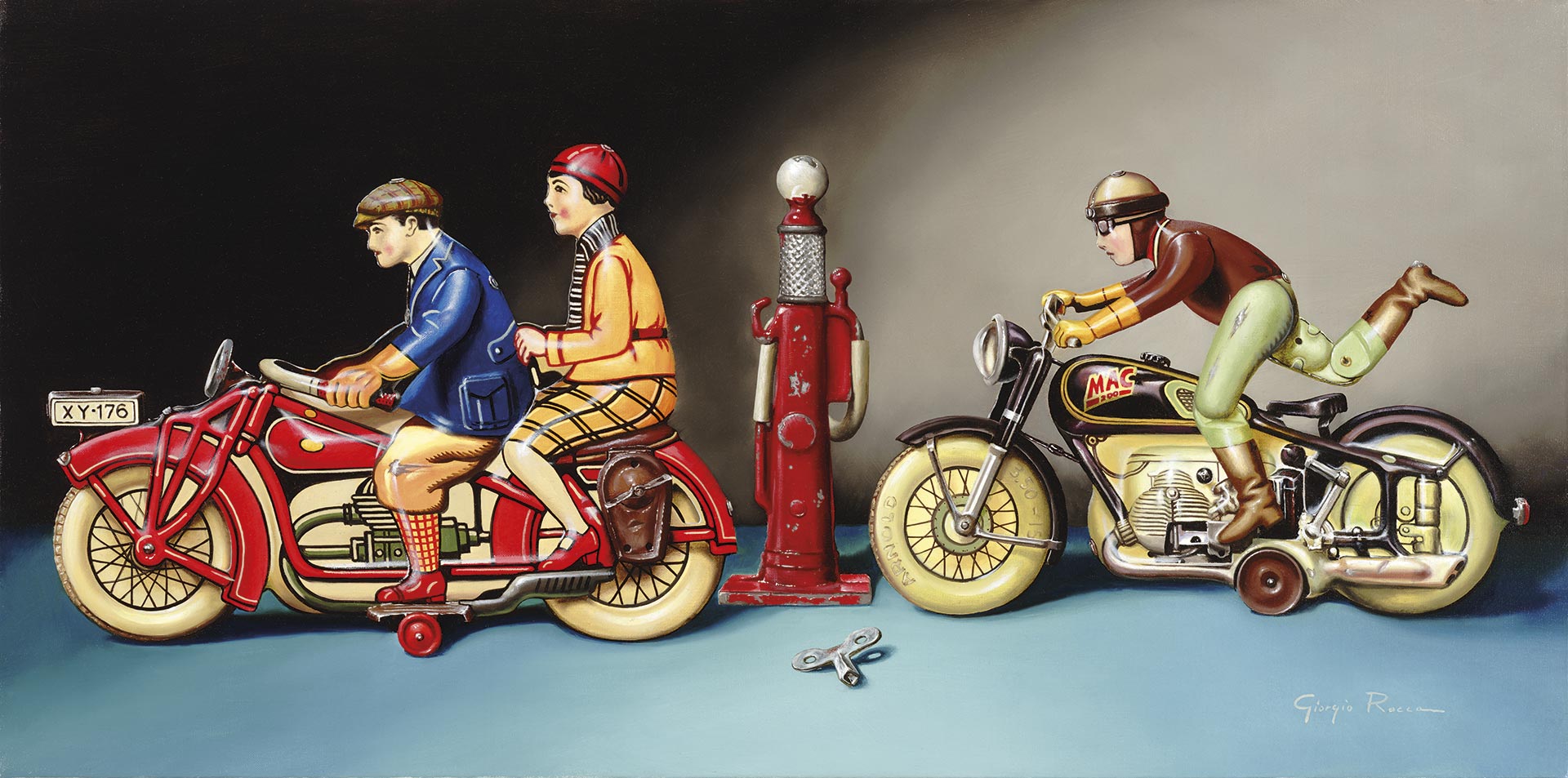“In the collective mind, the sea represents the infinite, the unattainable, the incomprehensible: it defies containment and understanding. The sail represents freedom, wind-powered motion, natural energy.
The painter Giorgio Rocca’s eyes look at the blue expanse and the unfurled sails from an unusual perspective: they magnify to be able to see, they zoom in to immerge in the deep. Thus the sea is reduced to a fragment, almost a cut-out. It takes on a completely different nature to that which, as epos and myth have sung about since the dawn of time, challenges us to daring deeds and to adventure. The sail, foreshortened, is folded over, at rest, despite the command “Carguez la toile!”.
The artist brings details into focus, and he reproduces them with virtuosity. He holds up a magnifying lens to reveal the hidden meaning of things: to take on the sea there has to be a sail, and to hoist the sail, a secret and hidden world of motion is set off.
A perfect jigsaw, like clockwork, given the studied intricacy of ropes and cables, nuts and bolts. As if to underline that it is the parts that make the whole thing work; those parts reproduced painstakingly, rendered with such accuracy thatthey transcend reality: more real than real, hyper-real. And yet, upon closer inspection, they don’t have the shine and brilliance of brand new objects, just unwrapped, unused. They carry slight traces of time: residues of brine, a touch of rust, the delicate signs of wood that has lived its life and that still braves the sea.
Even toys, another leit-motiv of the artist, bring us back to bygone days: old toys made of tin, having survived the attacks of time, found in a old suitcase. Toys perfectly preserved, and yet played with: a scratch, an imperceptible flaking of the paint, a wrinkle in the leather of an old-fashioned skate, a dog-ear in the comic from a long gone childhood, dug up from a long-lost bag, yet astoundingly well preserved, perfect and worn at the same time. All it would take, however, is to wind up the toy to impart that movement again. An invisible yet possible motion, like that hinted at with the sailing boats”.
Anna Tabbia




